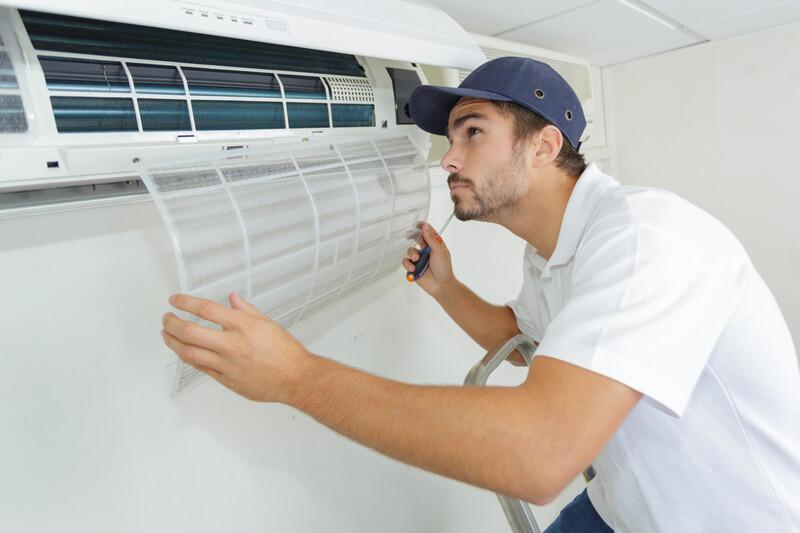The Anatomy of Your Air Conditioner

Air conditioning is everywhere, easily found in our homes and workplaces, the stores we frequent, and even the cars we drive. Even though a window unit, portable air conditioner, and vehicle air conditioner would seem to have very little in common, they’re actually a lot closer than you think. Understanding how they function can help you use them efficiently and also know when an issue warrants a call to Home Ace Plumbing.
Air Conditioner Components
All air conditioners share the following components in common.
- Thermostat: As with your home heating, the thermostat helps you monitor and regulate your indoor air temperature.
- Refrigerant: Many types of substances and compounds — including ammonia, propane, and Freon — are used as refrigerants because of their ability to change phase from liquid to gas and back with relative ease.
- Compressor: When matter is subject to pressure, it heats up. The compressor subjects the refrigerant to extreme pressure so it changes phase to a gas and heats up.
- Condenser coil: The condenser coil receives heated refrigerant and releases its heat to the outdoors, often with the help of thin metal fins that encourage heat transfer. As the gas cools, it changes phase again to a liquid.
- Evaporator Coil: Located indoors, the evaporator coil allows the liquid to change back to a gas and absorbs heat from the indoor air.
- Fan: Fans assist the movement of air through ductwork and over the coil systems.
- Air Filter: The air filter removes dust and contaminants from the air as it moves through the system.
How Air Conditioning Works (in Brief)
So how do all of those parts work together to cool your space? Let’s say your thermostat is set at 70 degrees. When the ambient temperature hits 71 degrees, the thermostat sends a message to your air conditioner to turn on. The refrigerant makes its way to the compressor, where it’s subjected to pressure that causes it to heat.
When it makes its way from the condenser coils to the evaporator coils, it releases that heat (which is why standing near the exhaust of an air conditioner means feeling a blast of hot air) and rapidly cools. As it cools, it’s able to absorb heat from the air, and this cooler air is then cycled back into your home. This cycle repeats until your home reaches the desired temperature and the unit cycles off. If any part of this cycle is interrupted because of clogs, insufficient coolant, or other factors, your AC won’t work as well — or at all.
Getting More Out of Your AC
There are a few simple things you can do to help your air conditioner do its job, so that it, in turn, can help keep you more comfortable. To begin with, set the right temperature (about 78 degrees Fahrenheit), since this conserves energy and limits extreme transitions between cold indoor air and outdoor heat. Also remember that a clean system runs better; change your filters on schedule to improve performance and indoor air quality. Also remember that maintenance ensures a longer system life and good performance too; with that in mind, schedule an air conditioning tune-up with Ace Plumbing Heating and Air Conditioning today!



